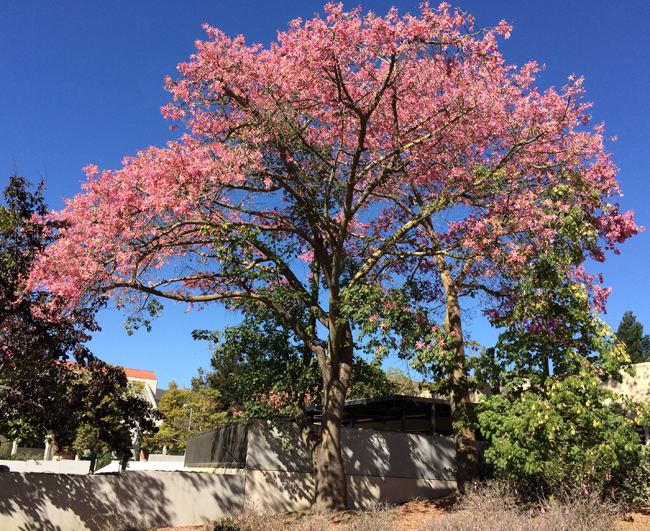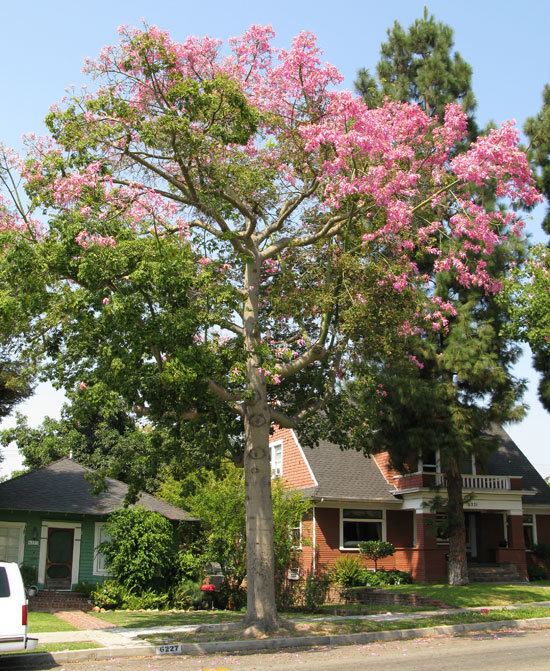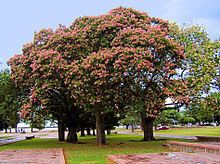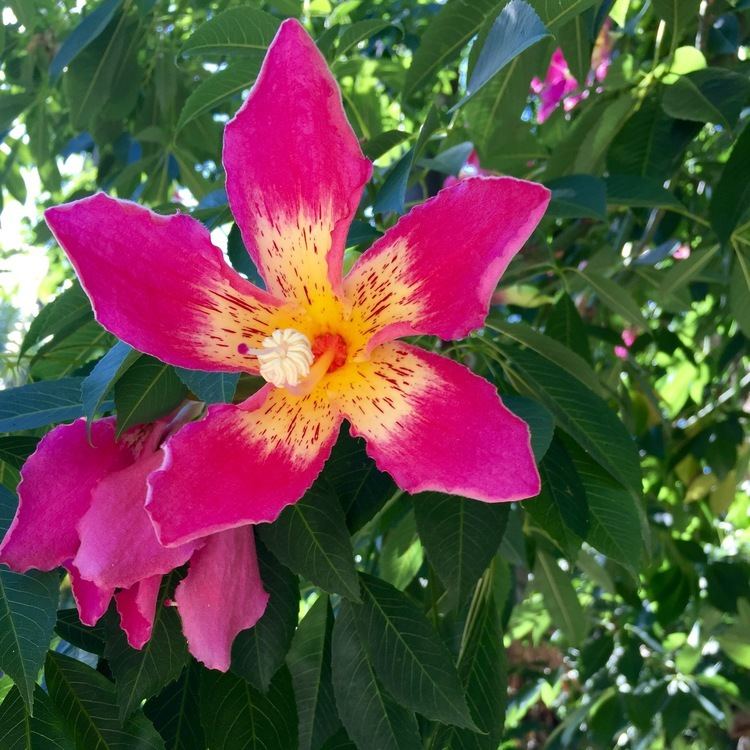Scientific name Ceiba speciosa Rank Species | Genus Ceiba Higher classification Ceiba | |
 | ||
Similar Ceiba, Bombacaceae, Bombax ceiba, White silk floss tree, Kapok tree | ||
Ceiba speciosa the silk floss tree
The silk floss tree (Ceiba speciosa, formerly Chorisia speciosa), is a species of deciduous tree native to the tropical and subtropical forests of South America. It has a host of local common names, such as palo borracho (in Spanish literally "drunken stick") or paineira (in Brazilian Portuguese). In Bolivia it is called Toborochi, means "tree of refuge" or "sheltering tree". It belongs to the same family as the baobab and the kapok. Another tree of the same genus, Ceiba chodatii, is often referred to by the same common names.
Contents
- Ceiba speciosa the silk floss tree
- Ceiba speciosa silk floss tree chorizia speciosa paineira malvaceae
- Description
- Leaves stems and flowers
- Fruits
- Uses
- References

Ceiba speciosa silk floss tree chorizia speciosa paineira malvaceae
Description

The natural habitat of the silk floss tree is the north-east of Argentina, east of Bolivia, Paraguay, Uruguay and southern Brazil. It is resistant to drought and moderate cold. It grows fast in spurts when water is abundant, and sometimes reaches more than 25 metres (82 ft) in height. Its trunk is bottle-shaped, generally bulging in its lower third, measuring up to 2 metres (7 ft) in girth. The trunk is also studded with thick, sharp conical prickles which deter wild animals from climbing the trees. In younger trees, the trunk is green due to its high chlorophyll content, which makes it capable of performing photosynthesis when leaves are absent; with age it turns to gray.
Leaves, stems, and flowers

The branches tend to be horizontal and are also covered with prickles. The leaves are composed of five to seven long leaflets. The flowers are creamy-whitish in the center and pink towards the tips of their five petals. They measure 10 to 15 centimetres (4 to 6 in) in diameter and their shape is superficially similar to hibiscus flowers. Their nectar is known to attract insect pollinators, as well as hummingbirds. C. speciosa flowers are in bloom between February and May (in its native Southern Hemisphere), but can also bloom at other times of the year. The flowers of the related C. chodatii are similar in form and size, but their color goes from creamy white centers to yellow tips. As a deciduous tree, it is completely bare of leaves and flowers during the winter months, especially when growing outside of its native South America habitat.
Fruits

The fruits are lignous ovoid capsules, 20 centimetres (8 in) long, which contain bean-sized black seeds surrounded by a mass of fibrous, fluffy matter reminiscent of cotton or silk.
Uses
The cotton inside the capsules, although not of as good quality as that of the kapok tree, has been used as stuffing f(density = 0.27 g/cm³), soft and flexible, and is employed in packaging, to make canoes, as wood pulp to make paper, and in ropes. From the seeds it is possible to obtain vegetable oil (both edible and industrially useful).
The silk floss tree is cultivated mostly for ornamental purposes. Outside of private gardens around the world, it is often planted along urban streets in subtropical areas such as in South Africa, Australia, northern New Zealand and the southern USA, although its prickled trunks and limbs require safety buffer zones, especially around the trunks, in order to protect people and domesticated animals from its prickles. Ceiba speciosa is added to some versions of the hallucinogenic drink Ayahuasca.
